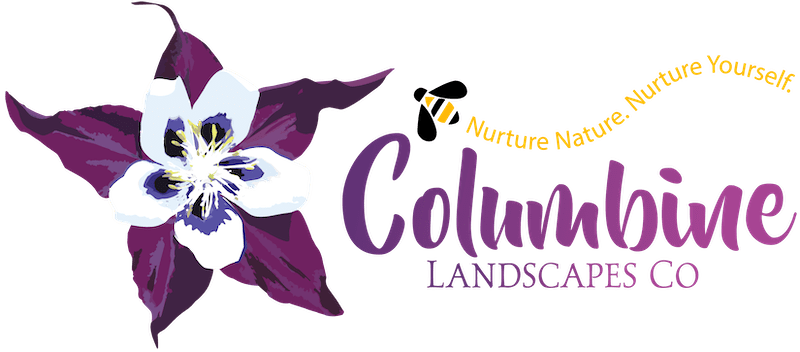14 May Perfect Pollinators
Perhaps you’ve heard about the calamity that has befallen the honeybee population in recent years. It really is important. Imagine what our grocery shelves would look like if we didn’t have bees! See with your own eyes the striking contrast at FastCompany.com. According to Greenpeace.org, “ Believe it or not, you have a bee to thank for every one in three bites of food you eat.”
I realize most of us grew up with a fear of bees, however, a distinction needs to be made. The nasty flying insects that spoil picnics are more often than not yellow jackets, wasps, or hornets. Honeybees seem to bear the brunt of the bad reputation of all of these flying, stinging, black and yellow striped insects, although much of it is wholly undeserved and it would seem, from the quote above that our lives quite depend on them. Well this is a call to action; this is the time to learn the difference and embrace the noble honeybee.
Of course plants that attract bees are never great plants to place near an entrance or pathway; it’s just not smart, but there are plenty of other locations on our properties, especially those of us who reside on larger or more rural properties. Plant the plants the bees love out in the back forty or along that far fenceline that you can see and admire the beauty of the flowering shrubs and larger perennials, but where no one really has reason to stroll by. So those of you who have bee allergies, don’t think I’m forgetting your plight. I realize it’s not to be taken lightly, so do what you need to do to keep yourselves safe. As for the rest of you, it may be time to face your fears and contribute to the good of society!
High Country Gardens has also been encouraging the use of bee attracting plants in their catalog and designate them with a bee symbol. Some of my favorite bee attracting plants well adapted to Colorado’s conditions include:
- Fern Bush/Chamaebartia millefolium
- Hopflower Oregano/Origanum libanoticum
- Globe Thistle/Echinops banaticus
- Ornamental onion/Allium sp.
- Blue sage/Salvia nemerosa
- Hidcote Lavender/Lavandula angustifolia ‘Hidcote’
I’m reading a novel right now that talks about how sensitive bees are; their feelings get hurt easily and they respond well to kindness and feel our intentions. Granted, it’s a work of fiction, but what if there’s truth to it? Perhaps, if we mean them no harm and can move away from our fear they leave us alone. I prune plenty of flowering Russian Sage/Perovskia atriplicifolia buzzing with bees with nary an attempted sting. I respect them, their importance in the food chain, their right to live and do their bee thing so intently, so beautifully, and it would seem that they respect me and the work I’m doing that keeps the plants that sustain them healthy and flowering. Perhaps you can take these ideas with you as you go to the nursery this spring to acquire some plants that nurture our bee population.
To the glory of the garden! Eva
Eva Montane, certified Landscape Designer & President of Columbine Landscapes Co

Sorry, the comment form is closed at this time.